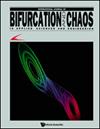Weak Sensitive Compactness for Linear Operators
IF 2.3
4区 数学
Q2 MATHEMATICS, INTERDISCIPLINARY APPLICATIONS
引用次数: 0
Abstract
Let be a linear dynamical system, where is a separable Banach space and is a bounded linear operator. We show that if is invertible, then is weakly sensitive compact if and only if is thickly weakly sensitive compact; and that there exists a system such that:
| (1) | is cofinitely weakly sensitive compact; | ||||
| (2) | and are weakly sensitive compact; and | ||||
| (3) | and are not syndetically weakly sensitive compact. | ||||
We also show that if is weakly sensitive compact, where is a complex Banach space, then the spectrum of meets the unit circle.
线性算子的弱敏感紧凑性
设 (X,T) 是线性动力系统,其中 X 是可分离的巴拿赫空间,T:X→X 是有界线性算子。我们证明,如果(X,T)是可逆的,那么当且仅当(X,T)是厚弱敏感紧凑时,(X,T)才是弱敏感紧凑的;并且存在这样一个系统(X×Y,T×S):(1)(X×Y,T×S)是共弱敏感紧凑的;(2)(X,T)和(Y,S)是弱敏感紧凑的;(3)(X,T)和(Y,S)不是联合弱敏感紧凑的。我们还证明,如果 (X,T) 是弱敏感紧凑的,其中 X 是复巴纳赫空间,那么 T 的谱满足单位圆。
本文章由计算机程序翻译,如有差异,请以英文原文为准。
求助全文
约1分钟内获得全文
求助全文
来源期刊
CiteScore
4.10
自引率
13.60%
发文量
237
审稿时长
2-4 weeks
期刊介绍:
The International Journal of Bifurcation and Chaos is widely regarded as a leading journal in the exciting fields of chaos theory and nonlinear science. Represented by an international editorial board comprising top researchers from a wide variety of disciplines, it is setting high standards in scientific and production quality. The journal has been reputedly acclaimed by the scientific community around the world, and has featured many important papers by leading researchers from various areas of applied sciences and engineering.
The discipline of chaos theory has created a universal paradigm, a scientific parlance, and a mathematical tool for grappling with complex dynamical phenomena. In every field of applied sciences (astronomy, atmospheric sciences, biology, chemistry, economics, geophysics, life and medical sciences, physics, social sciences, ecology, etc.) and engineering (aerospace, chemical, electronic, civil, computer, information, mechanical, software, telecommunication, etc.), the local and global manifestations of chaos and bifurcation have burst forth in an unprecedented universality, linking scientists heretofore unfamiliar with one another''s fields, and offering an opportunity to reshape our grasp of reality.

 求助内容:
求助内容: 应助结果提醒方式:
应助结果提醒方式:


